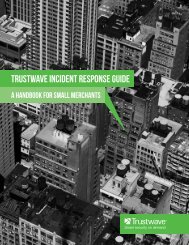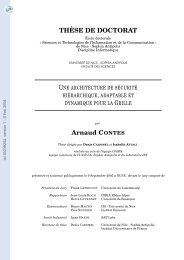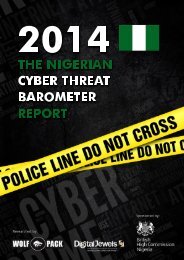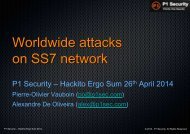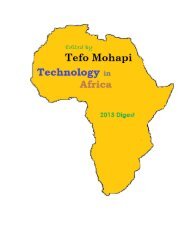JWP-Binde-McRee-OConnor
JWP-Binde-McRee-OConnor
JWP-Binde-McRee-OConnor
You also want an ePaper? Increase the reach of your titles
YUMPU automatically turns print PDFs into web optimized ePapers that Google loves.
Assessing Outbound Traffic to Uncover Advanced Persistent Threat<br />
Operation Aurora<br />
Operation Aurora demonstrates several of the key components of an advanced persistent threat<br />
(APT) based attack. [McAfee, 2010] This cyber-attack against several companies in the<br />
technology, security and defense industries started in mid-2009 and continued through<br />
December 2009. [Operation Aurora, 2011] Understanding that the intent of an APT is to gain<br />
access to targeted information and maintain a foothold in the environment for future use and<br />
control, Aurora is an excellent example to examine. [Daly, 2009] In the case of Aurora,<br />
attackers targeted the software-configuration management (SCM) systems that held proprietary<br />
information of Google, Adobe and other Fortune 100 companies over several months. The<br />
anatomy of the attack categorizes it as a classic APT attack. See Figure 1.<br />
Figure 1: Anatomy of the Operation Aurora Attack<br />
Page 4





